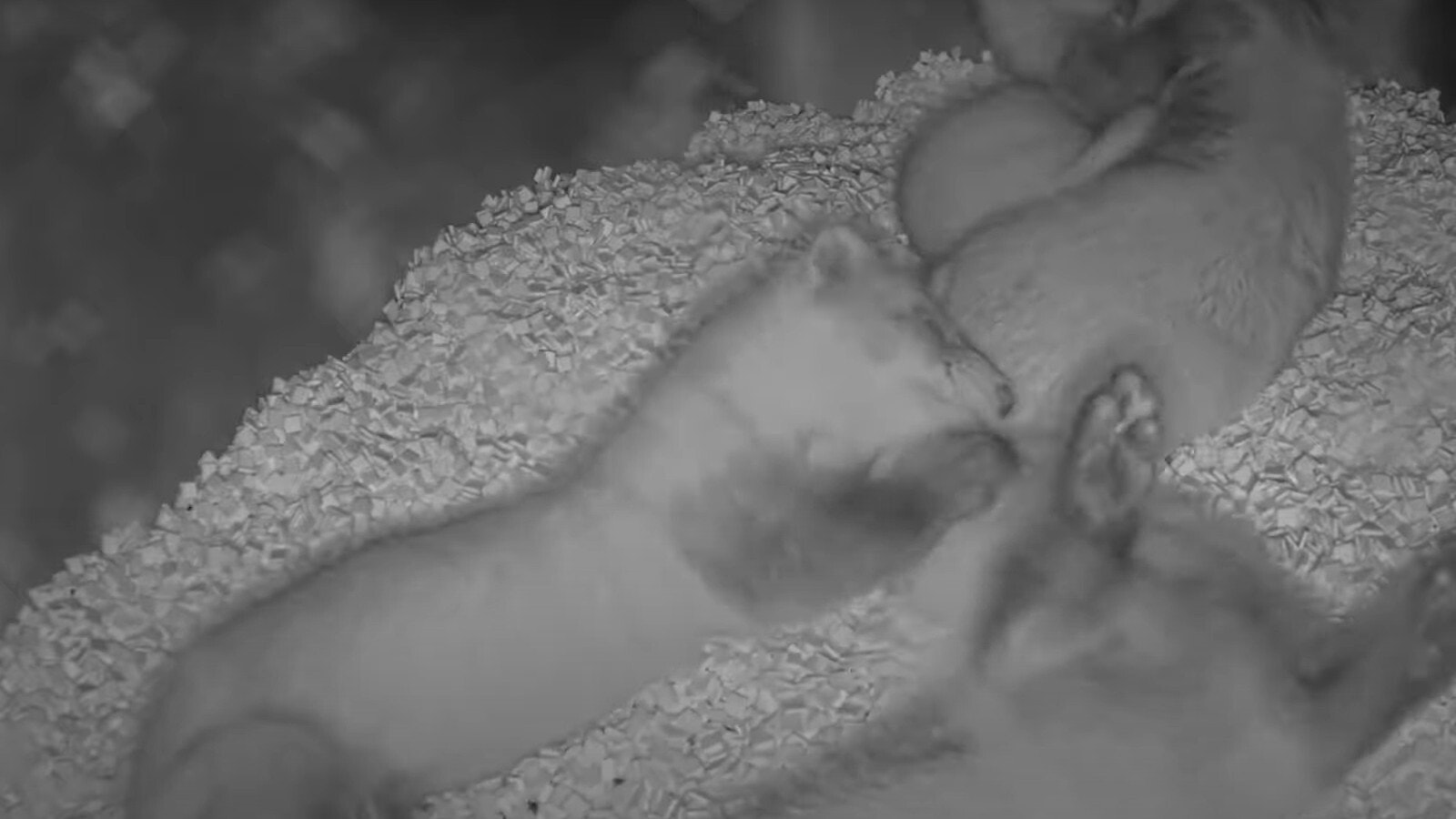The National Zoo in Washington D.C. is asking for the public to help select the names of its baby black-footed ferrets, which have significant ties to Wyoming.
On May 19, the National Zoo black-footed ferret Potpie gave birth to three kits at the Smithsonian Conservation Biology Institute in Virginia. The zoo has since livestreamed the family through a “ferret cam” on its website.
As Cowboy State Daily publisher Bill Sniffin pointed out in a recent column, the zoo’s black-footed ferrets are the descendants of a group transported to zoos and breeding facilities as part of a captive breeding program aimed at restoring the numbers of the nearly-extinct species.
Black-footed ferrets were thought to be extinct until 1981, when a small colony was found near Meeteetse. Later, 18 black-footed ferrets were captured and sent to zoos and breeding facilities to prevent the species from going extinct.
The Conservation Biology Institute in 1988 became the first facility outside of Wyoming to receive offspring from the captive breeding program. Potpie’s kits are the latest at the zoo to trace their ancestry back to that original group.
Now, the zoo is inviting the public to choose the name of the female kit. The options are: Americana, Aster and Prairie Rose. Zoo keepers selected these names, which pay tribute to the native plants and animals of the American prairie.
National Zoo members can help name one of the male kits, while players of the zoo’s mobile game, Zoo Guardians, can help name the other male.
Later this summer, the Association of Zoos and Aquariums’ Species Survival Plan scientists will conduct a genetic assessment of the entire black-footed ferret population managed in human care and will determine whether the three kits should remain at the Smithsonian Institute, transfer to another breeding facility or join the U.S. Fish and Wildlife Service preconditioning program in preparation for their release into the wild.
In deciding where the kits will go, scientists consider the animals’ genetic makeup, health and temperament, among other factors.
More than 1,000 black-footed ferrets have been born at the Smithsonian Conservation Biology Institute in Front Royal, Virginia, including 140 born via artificial insemination. Depending on their genetic value and ability to hunt live prey, some kits remain in breeding facilities, while others are released into the wild.
More than 350 of the Smithsonian’s kits have gone into ferret preconditioning programs, where they learn to live in burrows and demonstrate that they can successfully catch prey before being released into the wild.





